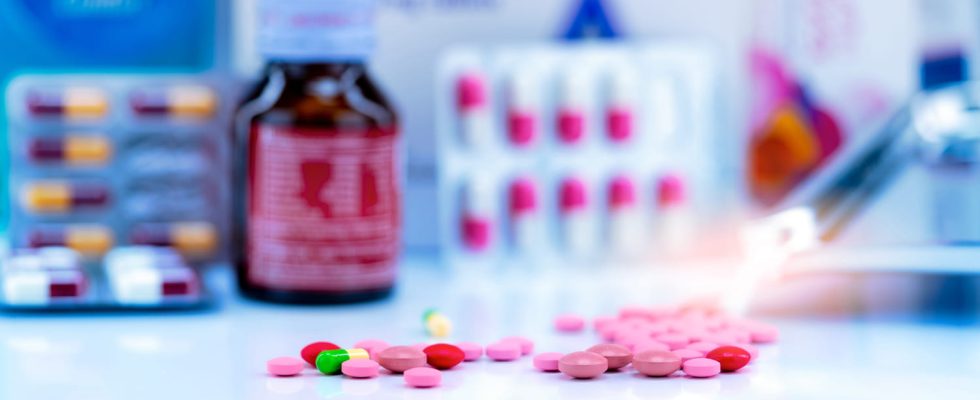Amoxicillin, anti-inflammatory… Taking certain medications can lead to spots and allergies, sometimes irreversible, when exposed to the sun. Here is the list of these photosensitive or phototoxic treatments to avoid.
Photosensitizing drugs are identifiable by a distinctive symbol on their box (red triangle pictogram containing a sun and a cloud), and a precise indication in the leaflet. The main families containing at least one photosensitizing component are:
- Nonsteroidal anti-inflammatory drugs (NSAIDs), gel or ointment. “THE Ketoprofen (Ketum) is particularly very photosensitizing“ emphasizes Dr. Catherine Oliveres-Ghouti.
- THE antibiotics (amoxicillin…).
- Antiallergic ointments, antihistamine cough suppressants.
- Cancer drugs: chemotherapies.
- Neuroleptics: antidepressants, antiepileptics, anxiolytics.
- Antifungals.
- Pesticides.
- THE anti-acne.
- Oral antidiabetics.
- Beta-blockers.
- Diuretics.
- Fibrates.
- Conversion Enzyme Inhibitors (IEC).
- Retinoids.
- Statins.
Medicines can cause abnormal skin reactions when all or part of the body is exposed to UV radiation. These drugs are called photosensitizers when they cause the skin to change color or appearance. There are two types of photosensitization reactions:
→ The phototoxicity is a skin reaction to molecules of a drug under the effect of the sun. It appears in the minutes to hours following theSun exposure, in the form of burns, like a “sunburn”, with or without “bubbles” on the skin. It can be localized to the area of application in the case of drugs in creams or ointments. It can extend to all parts of the body exposed to the sun if it is a drug taken systemically, and give rise to pigmentary disorders whose recovery can take several weeks or months.
“Exposing hands to the sun behind a windshield while driving a car is enough to trigger a reaction”
→ The photoallergy is an allergic reaction to a drug, triggered by exposure to the sun. It usually occurs in predisposed people within 24 hours, sometimes several days later. The lesions are similar to hives, or eczema, on all or part of the body, even on unexposed areas. Once declared, the photoallergy to drugs will be triggered with each sun exposure, it disappears slowly when the drug is stopped.
If you must follow a treatment with one of the drugs classified as photosensitizers, it is recommended to do not expose yourself to the sun or artificial UV rays. “Exposure of the hands to the sun behind a windshield while driving a car is enough to trigger a reaction” says the dermatologist.
→ Ask your doctor for advice on taking your treatment in case of stay or exposure, even short, to the sun.
→ “Never use perfume directly on the skin, nor essential oils, and little alcohol” or antiseptics, which may cause photosensitization. Furocoumarins are the most common photosensitizers found in plants and essential oils.
→ Women on the birth control pill and pregnant women must protect themselves effectively from the sun (using sun creams with a high index of 30 and 50, light but covering clothing, a hat).
→ Unprotected exposure can sometimes result in darker pigmentation on the cheeks and forehead.
Thanks to Dr Catherine Oliveres-Ghouti, dermatologist-venereologist in Paris, and to the National Syndicate of Dermatologists-Venereologists (SNDV).
